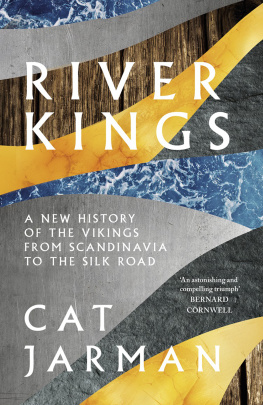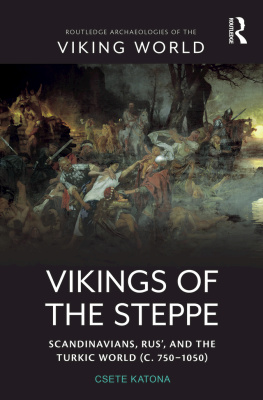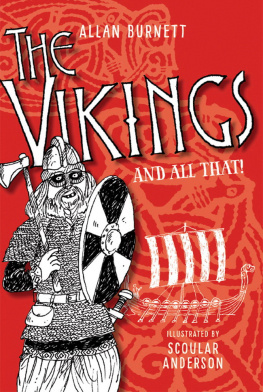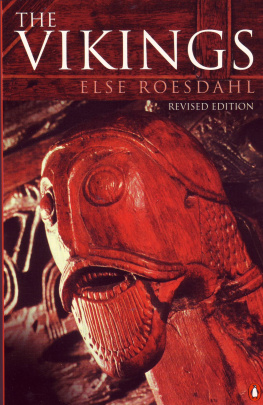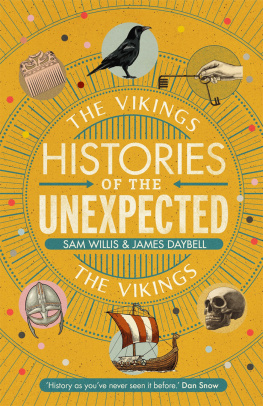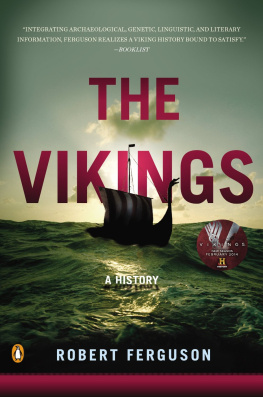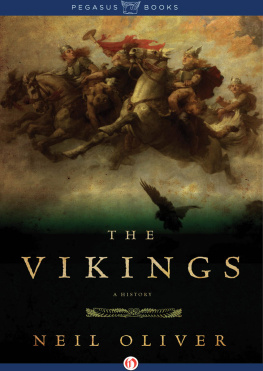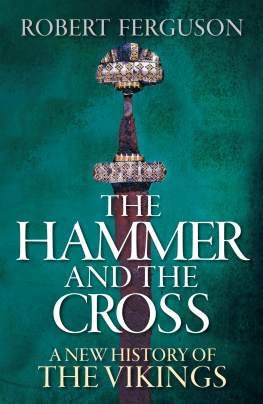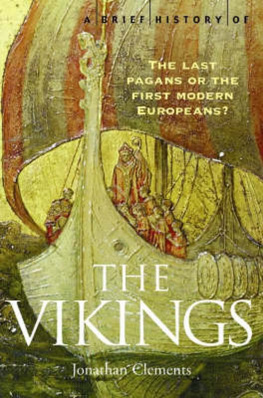RIVER KINGS
A New History of the Vikings from Scandinavia to the Silk Roads
Cat Jarman

William Collins
An imprint of HarperCollinsPublishers
1 London Bridge Street
London SE1 9GF
WilliamCollinsBooks.com
HarperCollinsPublishers
1st Floor, Watermarque Building, Ringsend Road
Dublin 4, Ireland
This eBook first published in Great Britain by William Collins in 2021
Copyright Cat Jarman
Cat Jarman asserts the moral right to be identified as the author of this work
Artwork by Richard Osgood
Maps by Martin Brown
Cover images Shutterstock
A catalogue record for this book is available from the British Library
All rights reserved under International and Pan-American Copyright Conventions. By payment of the required fees, you have been granted the non-exclusive, non-transferable right to access and read the text of this e-book on-screen. No part of this text may be reproduced, transmitted, down-loaded, decompiled, reverse engineered, or stored in or introduced into any information storage and retrieval system, in any form or by any means, whether electronic or mechanical, now known or hereinafter invented, without the express written permission of HarperCollins
Source ISBN: 9780008353070
Ebook Edition January 2021 ISBN: 9780008353094
Version: 2021-01-20
Til Mormor
CONTENTS
I n 1982, during the summer that I was born, archaeologists excavating a Viking winter camp in the sleepy Derbyshire village of Repton found a small orange bead among the jumbled-up bones of nearly three hundred people buried there in a mass grave. For the next thirty-five years, the beads existence was all but forgotten. Tucked away in a plastic box, it waited to be deposited in the depths of a museum archive or displayed in a brightly lit cabinet: to be marvelled at by curious children and hassled parents on a rainy Sunday afternoon. In 2017, that bead found its way into my temporary possession. At that point the task of disentangling the stories of the Repton dead had become a significant part of my life: I had spent over half a decade forensically examining their bones, piecing together fragmented information from pathology reports and chemical analyses, attempting to understand who they were and where they came from. I didnt know it at the time, but this bead would take my search for the Vikings in a whole new direction and radically change my understanding of the Viking Age.
I found it in a large Tupperware tub, nestled among hundreds of bags, boxes and envelopes in the Repton artefact archives. A colleague had lugged all of this to my house the evening before, and on that morning I was gradually working my way through the boxes to get an overview of the work to be done. Four decades worth of specialist reports, illustrations, and the records of more than nine thousand objects uncovered during excavations in the 1970s and 1980s had been passed over to me so that I could help to bring the archives to publication. Along with them were a large number of artefacts that had yet to be fully analysed, drawn and photographed before being sent to Derby Museum. The excavations in Repton covered more than 1300 years of history, representing a real-life journey through time: from the sites prehistoric and Roman origins, and its Anglo-Saxon monastery desecrated by the Vikings, stopping briefly at its Norman castle and Augustinian priory, to its present vicarage, church and well-known public school. The objects in those boxes stemmed from each and every one of these periods: there were Roman enamel brooches lying next to fragments of decorated medieval window glass, and a nineteenth-century bone toothbrush alongside an Anglo-Saxon comb. I felt like a child let loose in a toy shop after hours.
The bead itself was carefully wrapped in tissue paper within a clear polythene bag. Its orange colour bordered on brown; it was approximately a centimetre long and half a centimetre wide, with neatly cut, faceted corners and a polished and shiny surface. Apart from a few scars on one side, and some dirt still stuck in the hole bored through it, the bead was in perfect condition. Nothing about its appearance revealed its age: youd be forgiven for thinking it a piece of twentieth-century costume jewellery. I couldnt tell how old it was just by looking at it. I took out its cardboard tag from the bag, which included a series of numbers, words and letters decipherable only to the initiated. On an archaeological excavation, every single object is meticulously recorded, its context documented with military precision so that its final circumstances can be reconstructed decades or even centuries later.
29.8.82, Tr8. 3710, 703 [circled], very dark black
Translating these codes into plain English told me that the bead had been found in the late summer of 1982, in the same trench as the mass grave: the grave that I had dedicated six years of my life to analysing. The circled number 703 referred to the specific context or layer in which it was discovered; the description to the colour of the soil a very dark colour indicated a high organic content or, in other words, an area rich in human activity. I turned to the eight-volume list of finds from the excavations to check if the bead had been found alongside the Victorians, the Vikings or the Romans. The same layer had yielded a variety of finds, including a fragment of Anglo-Saxon window glass, a finely lattice-carved piece of bone that had probably come from a Saxon book cover, metalworking waste, and nondescript fragments of iron, but nothing dating to more recently than the ninth century. In other words, the bead had been found within the detritus of a Viking terror attack, alongside the remains of the 264 people I believe were some of the Viking Great Army war dead. Why had I never heard of this bead before?
Looking more closely, I could see the word carnelian written faintly in pen across the top of the bag. My knowledge of this material was a little sketchy, but the word alone seemed exotic and enticing. Searching online, I learned that carnelian is a mineral commonly used as a semiprecious gemstone, a variety of the silica mineral chalcedony. It had been fashionable among Vikings in the late ninth and early tenth centuries but would originally have come from India or the areas that are now Iran and Iraq. As such, beads like this provide evidence of contact with the Islamic caliphate and the trading routes that formed part of the Silk Roads, the ancient trading networks that stretched like spidery veins across large parts of Asia and central Europe. This was a world I knew little of but one that felt deeply alluring. While Viking expansion through eastern Europe and along trading routes bringing goods back to Scandinavia is well known, the Vikings who arrived in England have typically been considered a distinct movement. In history books, maps illustrate this spread with bold arrows: eastwards from Sweden, westwards from Denmark and Norway. Repton was no different the accepted interpretation of the bones that Id been working on seemed to fit neatly into the traditional Viking Age narrative: that of the Norsemen and Danes who travelled west in the late eighth century, launching a savage attack on unsuspecting monks at Lindisfarne in 793 and kick-starting the Viking Age in the process; and that of the hit-and-run raids of the succeeding decades that eventually, in the ninth century, led to ambitions of political conquest and settlement. This, it had been agreed, is what brought a certain

